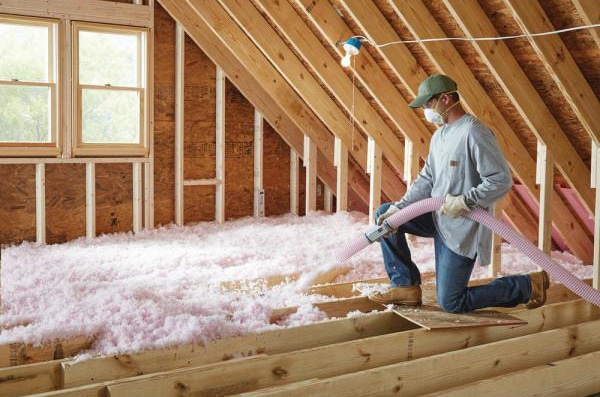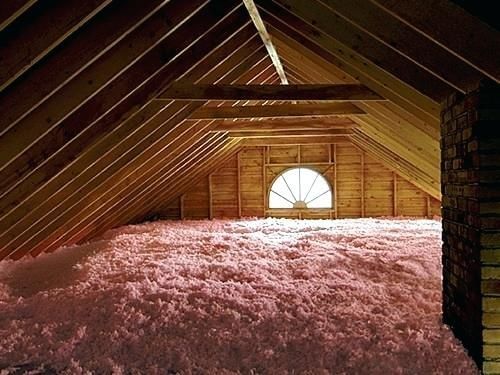Discover the Various Sorts Of Attic Insulation and Their Distinct Advantages for Your Home's Energy Performance

Fiberglass Insulation
Fiberglass insulation is just one of the most commonly used products for attic insulation as a result of its outstanding thermal efficiency and cost-effectiveness. Composed of little glass fibers, this product effectively catches air, creating a shielding obstacle that helps maintain regular interior temperature levels. Its high R-value per inch makes it particularly effective at standing up to warmth transfer, which is critical for energy conservation in homes.
Installment of fiberglass insulation is reasonably straightforward, commonly available in batts or loose-fill types, fitting numerous attic configurations. In addition, it is immune and non-combustible to moisture, reducing the danger of mold and mildew development. This resilience contributes to its longevity, making fiberglass a feasible long-term financial investment for house owners.
Furthermore, fiberglass insulation is commonly manufactured from recycled materials, which enhances its eco-friendliness. The material can likewise contribute to soundproofing, decreasing noise transfer between rooms. While it is important to use protective gear during setup to prevent irritability from the fibers, the total benefits of fiberglass insulation, including power cost savings and environmental considerations, make it a popular option for improving attic room efficiency and advertising a comfortable living atmosphere.
Spray Foam Insulation
Spray foam insulation is an extremely efficient option for attic room insulation, recognized for its exceptional air securing and thermal performance. This innovative insulation material is made up of a mixture of isocyanate and polyol resin, which, when incorporated, increases quickly to fill voids and dental caries in the attic room area. Its ability to stick to different surfaces ensures a continual obstacle against air leakages, significantly decreasing heat loss throughout cooler months and warm gain during warmer seasons.
One of the crucial advantages of spray foam insulation is its high R-value per inch, which suggests it gives outstanding thermal resistance in a reasonably slim application. This is specifically useful in attic rooms where area is often limited. Additionally, spray foam can aid lessen dampness build-up, decreasing the risk of mold and mildew and mildew development, which can be harmful to both the framework and indoor air high quality.
While the initial expense of spray foam insulation might be greater than typical options, its long-lasting energy financial savings, combined with raised convenience and enhanced home worth, make it a rewarding investment for homeowners looking for improved power performance. Attic Insulation DFW. Generally, spray foam insulation stands apart as an efficient solution for optimizing attic insulation
Cellulose Insulation

Cellulose insulation is a prominent option for attic room insulation, mostly composed of recycled paper items treated with fire retardants. This eco-friendly choice is known for its excellent thermal efficiency, successfully minimizing warmth transfer in both summertime and winter months. The thick composition of cellulose permits it to fill spaces and voids in attic rooms, supplying a smooth barrier versus air leaks.
One basics of the significant advantages of cellulose insulation is its capability to resist mold and mildew and parasites, owing to the fire retardant treatments made use of during production. In addition, it boasts a high R-value per inch, which equates right into exceptional power performance. Home owners can expect reduced home heating and cooling expenses as a result of boosted insulation.
Installation is commonly accomplished with blowing loosened cellulose right into the preferred location, permitting a quick and effective procedure. This method likewise lessens disruption to the existing structure. Cellulose insulation has a fairly low ecological influence, as its production process utilizes recycled materials, contributing to lasting structure methods.
Rock Wool Insulation
Amongst the different choices for attic insulation, rock woollen, also called mineral woollen, attracts attention due to its excellent thermal and acoustic performance. Made from all-natural or recycled products, rock woollen is created by melting rock and rotating it right into fibers, causing an item that supplies superb insulation buildings.
One of the considerable benefits pop over to these guys of rock woollen insulation is its high R-value, which suggests its performance in standing up to warmth flow. This characteristic not only boosts power effectiveness but also adds to keeping a comfortable indoor temperature year-round. Additionally, rock woollen is naturally fireproof, making it a much safer option for homes as it can withstand high temperatures without melting or releasing poisonous fumes.
Furthermore, rock wool insulation masters soundproofing capacities, efficiently minimizing noise transmission in between areas and from outdoors resources. This makes it an ideal selection for home owners seeking a serene living environment. In addition, rock woollen is moisture-resistant, assisting to avoid mold development and keeping the structural integrity of the attic room area. In general, rock woollen insulation offers a thorough option for enhancing power effectiveness, safety, and convenience in residential setups.
Radiant Barrier Insulation
Radiant barrier insulation serves as an effective option for reducing warm transfer in attics, specifically in warmer climates. This kind of insulation works by reflecting induction heat away from living areas, therefore lowering the quantity of warm that gets in a home throughout warm climate - Attic Insulation DFW. Typically composed of a highly reflective material, such as light weight aluminum foil, radiant barriers are installed in attic rooms, facing the roofing, where they can obstruct inbound heat from the sunlight
The key advantage of radiant barrier insulation is its ability to lower air conditioning prices. By showing heat instead of absorbing it, glowing barriers can aid preserve an extra steady interior temperature level, lowering the workload on air conditioning systems. This effectiveness translates into reduced energy expenses and increased convenience for property owners.
Along with energy cost savings, radiant obstacles can likewise add to improved interior air quality. By decreasing warmth buildup, they aid reduce humidity levels, which can avoid mold and mildew development and enhance total air circulation. When mounted correctly, radiant obstacle insulation can be an important addition to any energy-efficient home, making it a worthy factor to consider for house owners aiming to boost their attic insulation strategy.
Conclusion
To conclude, recognizing the different kinds of attic room insulation-- fiberglass, spray foam, cellulose, rock wool, and radiant barriers-- allows house owners to make enlightened decisions relating to power performance. Each insulation kind offers unique benefits, such as remarkable thermal resistance, moisture monitoring, and audio depletion. By selecting the proper insulation more tips here material, considerable reductions in energy prices can be achieved, in addition to enhancements in interior comfort. Inevitably, the right option adds to an extra sustainable living setting and advertises overall power preservation.

In final thought, understanding the various kinds of attic room insulation-- fiberglass, spray foam, cellulose, rock woollen, and radiant barriers-- enables property owners to make informed choices regarding power performance.